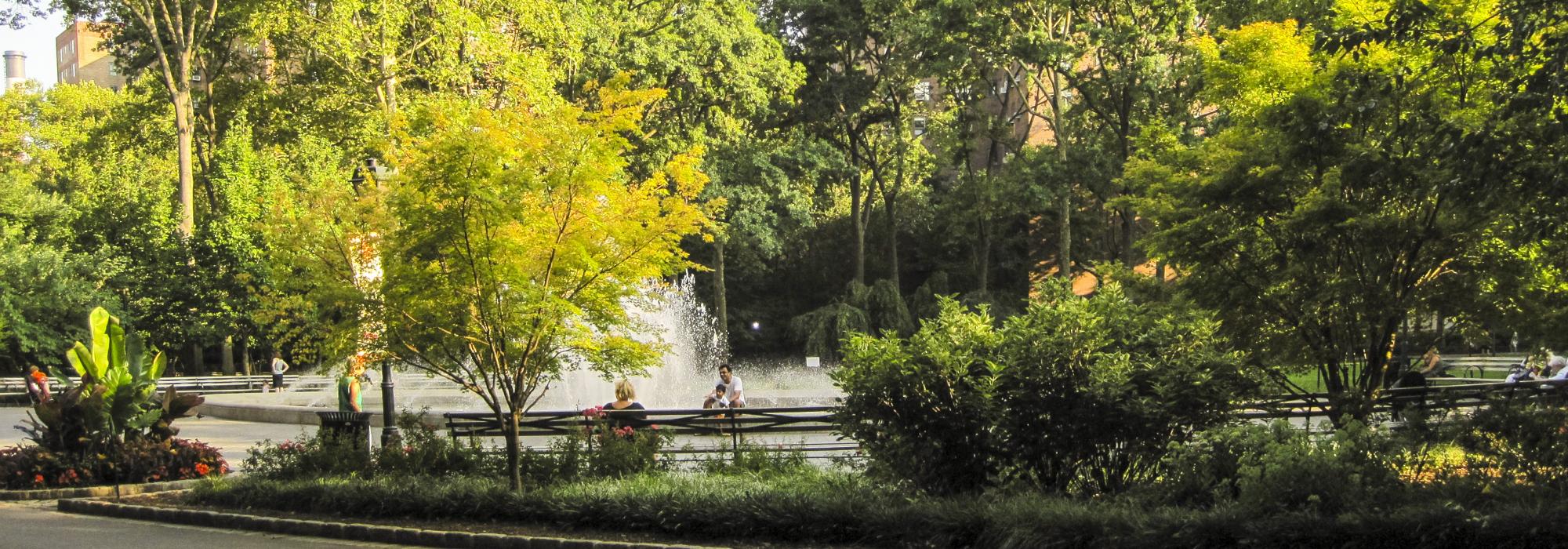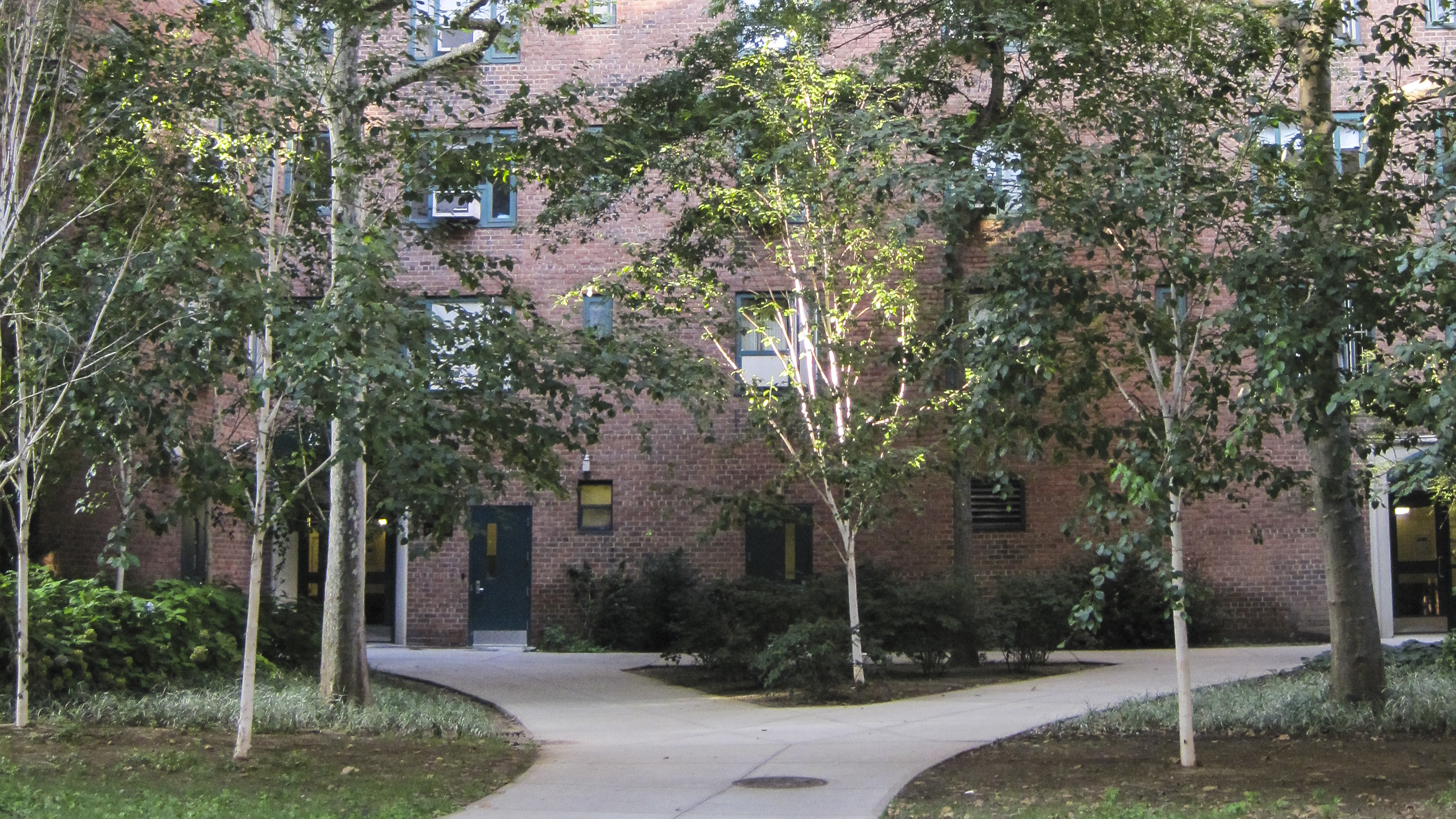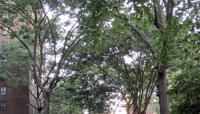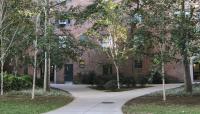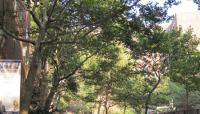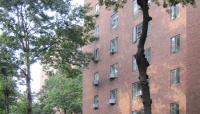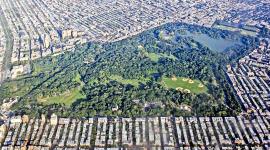Landscape Information
Designed in 1943 as part of New York City’s first significant post-World War II revitalization efforts, this apartment housing project was conceived in collaboration between the city, directed by Parks Commissioner Robert Moses, and a private developer, The Metropolitan Life Insurance Company. The project demolished eighteen traditional city blocks, with the new site covering seventy-two acres bounded by First Avenue and Avenue C/ East River Drive, and East Fourteenth and East Twentieth streets.
Completed in 1949, the project was developed by the insurance company's board of design, chaired by landscape architect Gilmore Clarke. The site was designed as one large superblock, the new building arrangements defining the central oval core, completely independent of the city grid. The landscape design is a combination of formal Beaux-Arts planning with picturesque features juxtaposed with dense, Modern red brick apartment towers. The landscape radiates out from the site’s center to incorporate areas of lawn and plantings, wooden benches, landscaped paths and tree-lined alleys, playgrounds, playing fields, and a central fountain basin. Although the site has undergone a number of major renovations which have resulted in significant alterations (e.g. the replacement of the original oval fountain), the integrity of the overall site master plan is clearly evident today.



